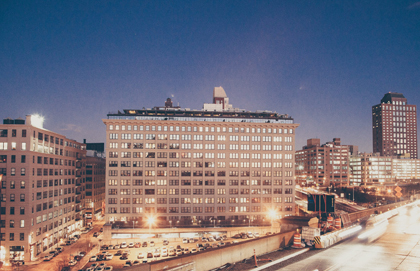Chief among the privileges of leading the Cardus Social Cities program are the many opportunities to meet people who are doing significant work in communities and cities across Canada, the United States and around the world. These conversations, email exchanges, phone calls, conference meetings, site visits and project collaborations constitute a counterpoint to what most people might imagine think tank work consists of.
While I am constantly navigating through the sea of words represented by printed work in books and articles, Twitter feeds and technical academic papers relevant to the social dynamics of cities, the core of Social Cities is relational. One past week was a good example of that.
On Tuesday afternoon TrueCity Hamilton director, Dave Witt brought two colleagues to my office to spend a couple of hours talking about how to attend to the challenging landscape of social networks that constitute the church communities active in TrueCity, and the many others who are not connected. We talked about how to measure social impact, what it might mean to make use of network science to explore needs and opportunities, and how researchers are undertaking that work from many different angles. My conversation with them was preceded by many years of engagement with TrueCity and social capital research. Faith communities comprise a critical component of common good generation in our neighbourhoods.
Thursday was spent being hosted by Cameron Airhart, Dean of Houghton College, Buffalo. I visited the small urban campus in 2014 when it was just getting started with a vision to provide educational opportunities to college-age immigrant students facing significant economic challenges. I had a chance to meet staff, students, and see how the program has grown since its inception. Houghton now offers the first two years of study toward an arts degree at the University at Buffalo (State University of New York). Surrounding the success of that program is a network of innovative and collaborative people committed to evolving solutions tuned to context instead of ill-fitting, imported frameworks that don’t work.
That was followed by a meeting and site visit with Cindi McEachon, Executive Director of Peaceprints™ of Western New York. Cindi is leading an organization committed to helping released prisoners become contributing members of their respective communities. To that end, she is working with various partners to bring together residence space, educational space and funding support to further enrich this vital work. Cindi has been recognized as one of Buffalo’s “Women Who Move the City” and her evident commitment is a powerful antidote to apathy or resignation.
I was then hosted at Mattie’s, an East Side soul food restaurant founded by Mattie and her husband George in 1972. Over grits and fried catfish, I learned more about growth and challenges in Buffalo from retired Houghton College administrator and faculty member, Chuck Massey. I was also encouraged to hear from Community Foundation for Greater Buffalo staff member Andrew Gaerte about new programs that are emerging across the community aimed at bridging the racial and economic divides in Buffalo. (In late January, Dean Airhart, Chuck and Andrew had traveled from Buffalo to Hamilton to attend the Rev. Dr. Rosalyn Murphy’s lecture on “The Church in Hard-Pressed Cities” in response to an invite I extended.)
Additional site visits and conversations included time spent with Rev. Richard Allen Stenhouse at Bethel African Methodist Episcopal Church (the oldest black religious institution in Buffalo). I learned about the remarkable initiative in the recent history of the congregation, which included a range of community partnerships that led to building nearly 50 new homes for those in need of housing. Not far away, Westminster Presbyterian Church also has a long history of care for the city including work with in the city including the Westminster Economic Development Initiative. One of the WEDI projects includes the West Side Bazaar – a Buffalo original “international small business incubator.”






